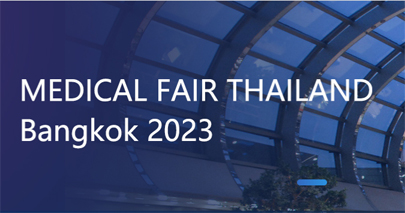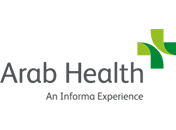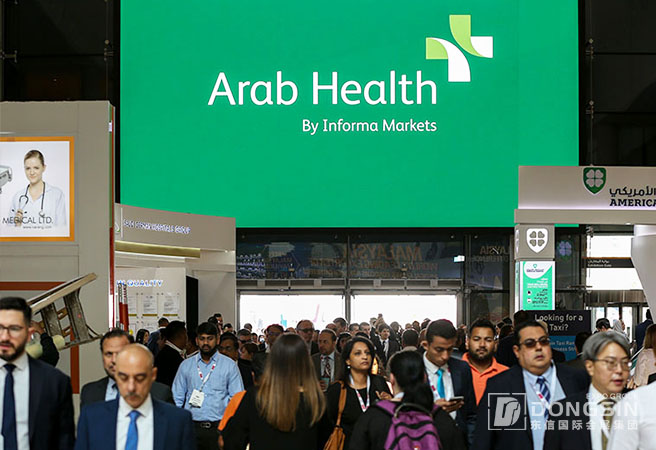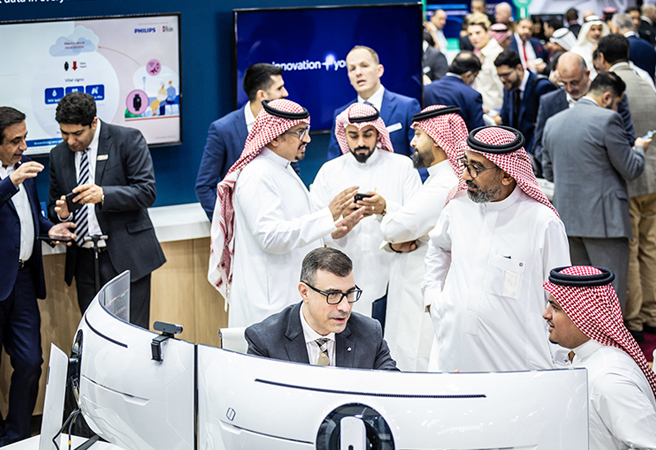





Arab International Medical Equipment Exhibition is the largest exhibition in the Middle East, the exhibits are relatively complete, the exhibition effect is good international professional medical equipment exhibition. Since it was first held in 1975, the scale of the exhibition, exhibitors and visitors have expanded year by year, exhibitors from China, the United States, the United Kingdom, Germany, Italy, South Korea, Turkey, Brazil and other countries to participate in the exhibition, the exhibition attracted hospital managers and medical device dealers in the Middle East countries to visit and negotiate trade.
Arab Health has been enjoying a high reputation among hospitals and medical device agents in the Middle East Arab countries. The Middle East Medical Equipment Exhibition 2023 covers an area of 75,000 + square meters, attracting 4,000+ exhibitors from 62 countries and regions, and more than 100,000 visitors. This is the 16th year that the Chinese Exhibition group has organized a group to participate in the exhibition, with about 300+ exhibitors from China and an area of about 6,800 square meters. World-renowned enterprises, such as Siemens, Philips, General Electric, Kodak, STORZ, 3M, etc., regularly participate in the exhibition, adding a lot of color to the exhibition.

The theme of this year “ United bybbusiness, forging ahead” and“ Connect with innovation that's changing the face of diagnostics” At the same time, the Future Health Summit was launched, with more than 150 senior government officials and ceos from around the world, and more than 550 speakers attending the summit. The theme of the summit is divided into: Radiology, Orthopedics, obstetrics, gynecology, surgery, healthcare quality management, family medicine, ENT, emergency medicine and critical care. AI Owais, Minister of Health and Prevention of the UAE, attended the exhibition on the opening day and said that the UAE's strong security measures and ability to host major events such as Arab Health have increased confidence in the global recovery, and the exhibition has shown extraordinary capabilities in the management and governance of the novel coronavirus outbreak.
Medical Instruments and Equipment : Medical electronic instrument, medical ultrasound instrument, medical X-ray equipment, medical optical instrument, clinical examination and analysis instrument, dental equipment and materials, operating room, emergency room, consultation room equipment and equipment, disposable medical supplies, medical dressings and hygiene materials, all kinds of surgical instruments, medical health equipment and supplies, traditional Chinese medical instruments and rehabilitation equipment, Hemodialysis equipment, anesthesia respiratory equipment, etc.
Family health care products and small health care equipment : Family health care products, small household diagnosis, monitoring, treatment equipment, rehabilitation, physiotherapy equipment and supplies, electronic medical equipment, dental equipment, hospital office supplies, sports medicine supplies.
Raw materials, proprietary Chinese medicines, medicine and health care, treatment, rehabilitation, health care drugs and supplies with Oriental medicine characteristics.
Ø When the country was founded in 1971, there were only seven hospitals and 12 health centers. As of 2015, there were 126 public and private hospitals with more than 12,000 beds. The rapid development of the UAE's healthcare industry, on the one hand, is built on the domestic demand brought about by its rapid economic and social development, and on the other hand highlights the UAE's vision to become a regional medical tourism hub.
Ø According to the GCC Healthcare Industry report released by Alpen Capital, the demand for hospital beds in the UAE will reach 13,881 by 2020, with a compound annual growth rate (CAGR) of 2.9%. The total healthcare market will reach $19.5 billion with a compound annual growth rate of 12.7%.
Ø To implement the National Agenda 2021, the UAE aims to build a world-class healthcare system and become a pioneer in world-class healthcare destinations. According to the latest findings of the Middle East and North Africa (MENA) Research Partners, the UAE has witnessed a structural shift in the healthcare sector. Over the next five years, its economy is expected to grow by AED 103 billion (about $28 billion).
1643176314113238.jpgØ According to BMI, healthcare spending in the UAE reached $16.12 billion in 2016, up 5% from the previous year. Healthcare spending is expected to continue to grow at an annual rate of 5.5 percent, reaching $27.78 billion by 2025.
Ø Another driver contributing to the growth of the UAE's healthcare sector is medical tourism. According to the DHA, the number of medical tourism visitors outside Dubai increased from 298,359 in 2015 to 326,649 in 2016, generating revenue of AED 1.42 billion (US $390 million). By 2020, the number of medical tourism tourists outside Dubai is expected to reach 500,000, and medical tourism revenue will reach DH2.6 billion (about $710 million), thanks to favorable measures such as convenient visa procedures.
Ø The Emirate of Sharjah has made healthcare a strategic development priority, with the Sharjah Investment Development Authority (Shurooq) forecasting that the emirate's healthcare market will grow from $2 billion in 2016 to $2.4 billion in 2019.